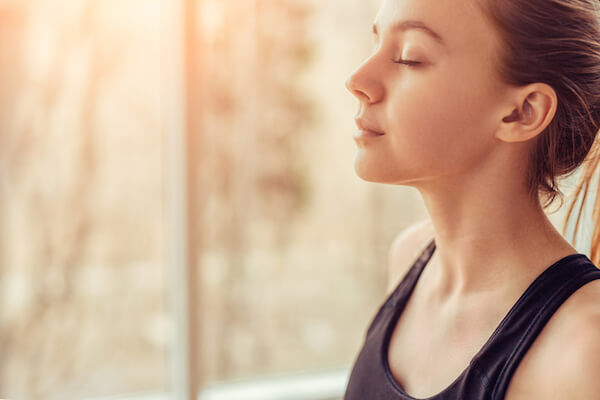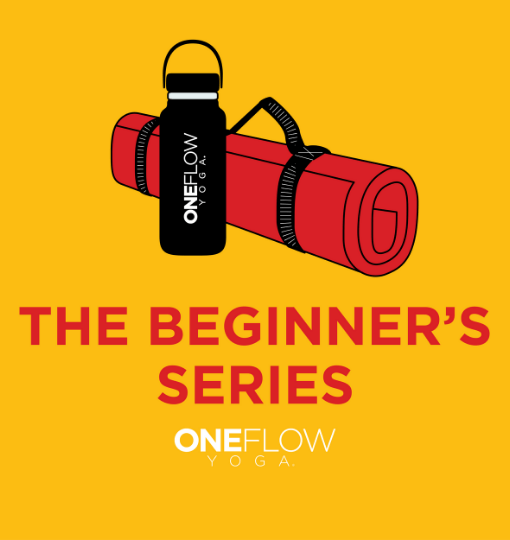One yoga benefit of yoga rarely explored is the role it plays in injury prevention. That may not seem intuitive, given the focus we put on its mind-body aspects. But this discussion can help athletes or anyone who has a body, so it’s worth asking, “how can yoga prevent injury.”
| Quality | How It Helps Prevent Injury |
| Strength | Builds functional strength and stability |
| Flexibility | Increases mobility and range of motion |
| Balance | Enhances the ability to be asymmetrical |
| Symmetry | Counterbalances sport specific training |
| Variation of Movement | Prepares the body for novel demands |
| Whole Body Focus | Explores the interconnectedness of movement |
| Ease Tension | Allows you to move better with less energy |
| Embody | Helps to create body awareness |
| Breathing | Coordinates breath and movement |
| Relaxation | Key to power, focus, and high performance |
| Awareness | Brings consciousness to how you move |
This conversation is centered around injuries you may encounter in your regular athletic pursuits. So if you run, lift weights, play soccer or do another sport, this is for you.
But yoga can benefit the athlete and couch potato alike because we are all prone to injury just by the nature of having a body. Yoga can help you move better and prevent injuries that come from daily living.
How Yoga Helps Prevent Injuries
Injury prevention takes a proactive versus reactive stance. You are engaging with the genuine possibility of injury instead of waiting for things to happen.
By using a strategy like yoga, you acknowledge the risk of being a fit, active person. And the rewards of fitness outweigh the potential negatives because not moving is more harmful to you.
There are many reasons for injury. We are often unprepared for the loads or demands we place on our bodies. Or we try to overexert and do too much.
The number one injury in the U.S., according to the Centers for Disease Control (CDC), strains and sprains, reflects this overdoing approach.
“The two biggest mistakes people make when designing an exercise program are to train too hard and to not include enough variety. This will lead to an unbalanced muscular system, which is a surefire recipe for injury.”
Brad Walker, The Anatomy of Sports Injuries
Yoga can not only help you address those two factors but make you more capable and less prone to injury in general. Below are the ways yoga helps prevent injury.
Strength
Strength is the foundation of all physical activity. Unfortunately, only 1 in 3 adults do the federally recommended minimum of 2 strength-based workouts a week.
Yoga is recognized by the CDC as a strength-building physical activity that increases muscle tone and bone strength.
Not only that, yoga focuses on functional strength, which means it works several muscles and joints at the same time. This replicates how you move in both athletic endeavors and the real world. Most people do not contract only their biceps or hamstrings, or obliques independently so it makes sense to use a holistic approach like yoga.
Yoga serves to strengthen your connective tissue, such as your ligaments and tendons, by introducing various degrees of force and direction change. This further increases their ability to withstand strains, which affect muscles and tendons, and sprains, which target ligaments.
Strength has a complement of stability. Many times we are injured because we have mobility without stability. That is, we move without strength. This can overload the joint being moved. Yoga teaches you how to have both so that you can move injury-free.
The bottom line is that by practicing yoga regularly, your entire body will be stronger and more capable.
Flexibility
Ask people why they don’t practice yoga, and they’ll tell you they are not flexible enough. But yoga is how you can increase your flexibility.
For simplicity, we’ll talk about flexibility in terms of range of motion and mobility rather than a more complete definition involving tensile loading.
Range of motion is the scale or spectrum you can move a joint through. People refer to themselves as tight when they have a limited range of motion and flexible when they can move more freely.
By practicing yoga, you have greater access to your range of motion, which will be different from the person on the mat next to you for various reasons. Interestingly, increasing your flexibility is also tied to strength.
Yoga helps to prevent injury from a flexibility perspective because it gives you more leeway to move in unexpected ways. For example, you may slide down a small hill and end up backward on your butt while hiking or stretch out to block a pass in basketball. You reduce the risk of injury in both cases by being more flexible.
Side Note: This is part of physical therapists’ work to help you regain your mobility and flexibility. Yoga does the same.
Balance
The ability to balance is quite complex and involves several sensorimotor systems working together. And as with strength and flexibility, you can improve balance through yoga, which will prevent injury.
Yoga does this by introducing asymmetrical yoga poses that challenge your balance. Like weight-lifters lift progressively heavier weights, yoga increases the degree of balance possible over time. Yogins can balance on one leg, one arm, and a leg, or two arms all while repositioning themselves in space relative to gravity.
You might see a yogini do lunge, but then take it into a twist. Or she might balance on one foot and one hand in half moon, ardha chandrasana, then evolve it into a backbend called chapasana. All the while, her body is learning and reinforcing her actions on a neurological level.
Athletes, both pro and recreational, regularly perform feats requiring balance. Yoga allows them to fine-tune this factor and thus prevent slips and falls.
Balance is also a challenge as we age and why the CDC adds it as a recommended fitness component, especially after age 65.

Symmetry
Symmetry is bringing your body back into harmony. It’s wise to use sport-specific training to prepare for whatever your physical activity is. But, that means you aren’t always training other parts of your anatomy.
For instance, runners have legs that will go for miles. But they may lack leg strength and are almost certain to have a weak upper body. By practicing yoga, a runner can bring more symmetry between their lower body and upper, resulting in being a more efficient runner.
Think of yoga as balancing the imbalances your other activities subject you to. Being too strong in one area of your physique but underdeveloped in another can predispose you to injury. Yoga is the counterbalance.
Non-athletes too have these same imbalances. When you first start practicing yoga you’ll notice how you’re stronger on one side or can balance easier on the other. This stems from having a dominance of one arm or leg or habitually doing certain activities with one part of the body.
Yoga can rectify and bring you more into balance.
Variation of Movement
To train your body effectively for any activity, your body needs two things, repetition, and novelty.
If you are going to get stronger, you need to repeat actions that challenge you. But, because of the principle of adaptation, your body will get used to those movements, so you need to surprise it. This is called novelty and something yoga, especially vinyasa yoga, loves.
There are two different types of sequences in yoga–fixed and varied. A sequence is when two or more yoga poses are put together. Ashtanga yoga, which has a set primary series, is an example of a fixed sequence.
In vinyasa yoga, the sequence changes every time so that no two classes are alike. The postures are repeated, so you can build strength, but the way they are put together varies so that your body continually has novelty to challenge it.
Having variety in yoga also helps prevent repetitive motion injuries. These arise when you overuse a body part repeatedly and can be as routine as typing at your computer or swimming laps.
The most significant benefit of variability is it prepares your body for unfamiliar situations and movements. Many injuries occur because you are not ready for the load or stressor you are placing on your body. By moving in a wide range of ways, even upside down, you prepare your body for anything.
I’ve seen students, whose only exercise is practicing vinyasa yoga, go out and complete obstacle course competitions without soreness. They got their cardio, strength, balance, flexibility, and agility from yoga. That’s an extreme example but speaks to what is possible.
Whole-Body Focus
Our body is an interconnected system, with every part dependent on every other. This has implications for prevention because injuries show up in one area of the body but can be caused by another.
It works like a chain reaction. For example, if you are a golfer, you might be prone to lower back injuries resulting from a lack of hip or shoulder mobility. You have to compensate for this lack of movement in one body part by moving another part further.
Yoga is considered a full-body workout meaning you train your entire body each time you are on the mat. This is not only more efficient from a training standpoint but also ensures you minimize injury from a body part that may have been missed.
Ease Tension
Economy of movement is the ability to put energy only where you need it.
As yoga practitioners, we learn to regulate and be efficient with our efforts. By practicing yoga, we enter a feedback loop to ask ourselves how much energy is needed here. It’s a skill that can also prevent injury and increase performance.
Beginner runners often try to run as hard as they can. But that strategy tenses your entire body and doesn’t work well for power transfer.
Excess muscle tension can overstress your joints and muscles, leaving you at risk of injury. Think of tension as contracting a muscle or pulling. Pulling, when done with awareness and stabilization, is relatively safe. But tension without attention can pull your joints off-center, predisposing them to trauma.
Embody
Becoming embodied is coming home to yourself. It’s being in your body and feeling what you feel.
Even though we use our body to run, jump and spin, that doesn’t mean we are in our bodies. The quality of embodiment requires a connection between mind and body. It’s navigating the internal sensations as well as the outer.
Sensation is in the wheelhouse of yoga. As we practice, we become more attuned and connected to what the body is saying.
By being in your body, you can heighten proprioception, the sense of knowing where your body is in space and how much energy to use to move it. This is invaluable if you are on a tennis court, in a swimming pool, or on a football field. And it can help protect you from injury.

Breathing
Breathing is central to yoga. The breath-initiated practice helps to coordinate our movements and brings us into a greater state of presence.
Yoga is an outlier as a physical activity. Most recreational athletes aren’t taught how to breathe. And that can lead to breathing in ways that cause tension and tightness.
The problem is we don’t develop the diaphragm, the largest muscle responsible for respiration. It sits below the lungs and looks like a parachute or umbrella.
“A typical adult engages as little as 10 percent of the range of the diaphragm when breathing, which, overburdens the heart, elevates blood pressure, and causes a rash of circulatory problems.” James Nestor Breath.
Yoga can strengthen the diaphragm because it is a muscle and will get stronger if you train it. Yoga is breath training.
Athletes know to train their hearts because that determines how fast blood, oxygen, and nutrients can be delivered throughout their body. More and more are realizing that breath training is equally important as it affects respiration and aerobic capacity. By increasing your aerobic ability, you reduce your dependency on anaerobic states and prevent injury from overexertion.
Relaxation
“Everything you do, if not in a relaxed state will be done at a lesser level than you are proficient.”
Bruce Lee
Whether for the sporting arena, stage, or concert hall, elite performers recognize the connection between relaxation and energy. New singers and guitar players will often try to make a sound by going big and tightening. They try to use brute strength to force the voice or pluck the string, and the effect is always the same, something unpleasant.
Relaxation in sports gives you access to speed and agility, grace and deftness. It lets you become absorbed in your activity until it feels effortless.
We call this the state of flow. It is the place of presence and ease.
Relaxing allows you to go further and be more skillful.
And yoga can teach you how.
Yoga practitioners not only learn to relax but to do so in the midst of difficulty–the epitome of sports performance.
Awareness
Yoga is a practice of paying attention. This is the game-changing quality of yoga.
Injuries often start with warnings. They give you advance notice, like the light on your car that tells you the oil is low. We ignore those signals because they are minimal, like a slight pain in the shoulder, hip, or knee. We dismiss them even as they grow. Then it’s too late, and injury occurs.
Circling back to Brad Walker’s comment about training too hard, frequent injuries occur from overdoing it. We overexert ourselves, push too hard and end up injured.
Yoga helps us develop the tools to detect those early signals, a quality we call awareness. It has many names, consciousness, mindfulness, presence. Still, the goal is the same–to become aware of what is happening in the present moment.
This is different from our usual approach of going through the motions. Often we push our way through exercise and other activities because that’s our habit of approaching the world.
Pushing to be the best is common among athletes. After all, they are in competition.
Awareness can raise your performance level because it gives you options that don’t exist when moving by rote. It heightens your senses to pick up the faintest of bodily broadcasts that indicate trouble lies ahead.

Professional Athletes Trust Yoga For Injury Prevention
In yoga, there is the theory and the practice. Very often, people will share hypotheticals but then not have any proof. So let’s talk money and go to the people who use yoga professionally for injury prevention.
Professional athletes make their living based on their ability to use their bodies skillfully. Career longevity is about staying healthy, i.e., injury-free, and performing at the highest levels of competition.
And more and more pros are using yoga for injury prevention.
You’ll find yoga in professional basketball, football, baseball, tennis, soccer (football to the rest of the world), and beyond.
Yoga is a required workout for all rookies and players rehabbing injuries on the New York Giants.
Tom Brady, who is considered the greatest quarterback in football history, plays statistically better at age 43 than at 41 or 42. He’s getting better. And yes, he gives a shout-out to yoga.
So does another player in his 40s, Ryan Gibbs of Manchester United fame. He plays in the highest league in the U.K., the Premier League, and calls yoga his “Fountain of Youth.”
Yoga is only getting more popular among the professionals, and I cite them because it has to work in their world. Otherwise, they would get rid of it. There’s too much at stake.
“Obviously (yoga) helps with flexibility, what we call joint integrity, discipline, focus, and balance…if you’re doing things throughout the season, like yoga, to help maintain what you’ve established with your body, that helps you get through the season, helps reduce your chance of injury and things of that nature.”
Los Angeles Chargers Director of Football/Medical Services James Collins, an NFL athletic trainer for 31 years.
The pro perspective of yoga is to release tension, build strength, and for mental resilience.
Adds Joe Johnson, seven-time NBA All-Star,
“the better you treat your body, the more longevity you’ll have.”



